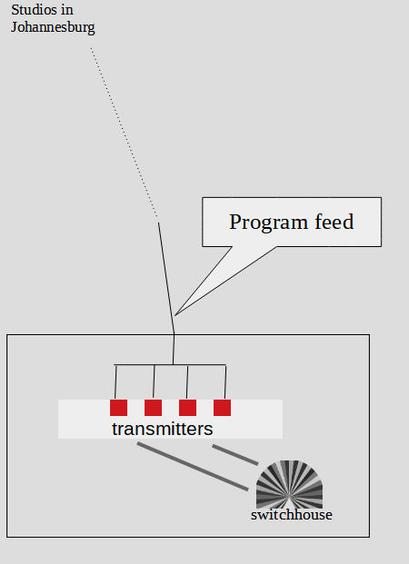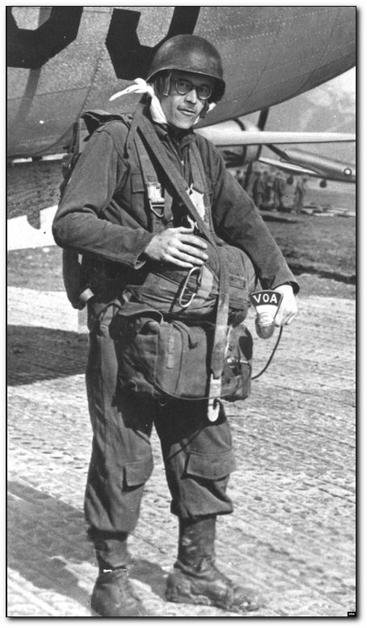How MLB plans to grow Ohtani, Dodger fandom in Japan into billions for league https://www.rawchili.com/mlb/6962/ #Baseball #BaseballPlayer #BaseballTeams #Broadcasting #BusinessNews #JAPAN #LosAngelesDodgers #MajorLeagueBaseball #MLBTeams #NipponProfessionalBaseball #NPB #RetailSales #RobertD.ManfredJr. #Seoul #ShoheiOhtani #Sports #SportsEvents #SportsTV #Tokyo #YouthBaseball
#Broadcasting
7.30's Laura Tingle to become ABC's new Global Affairs Editor
Tingle, a Walkley-Award-winning journalist, will take up the post mid-year, joining a network of foreign correspondents around the globe.
https://www.abc.net.au/news/2025-05-07/laura-tingle-announced-as-abc-global-affairs-editor/105262626
A Story of Radio RSA (2): Early Days at Bloemendal Transmitter Site
Most shortwave listeners outside South Africa, provided that they were teenagers or older in the 1970s and 1980s, will think of Radio RSA when South African radio is mentioned. But Radio RSA’s parent organisation, the South African Broadcasting Corporation (SABC) was founded in 1936, and some early broadcasting seems to have taken place as early as in the 1920s.
Previous blog:A Story of Radio RSA (1), April 23 2025
According to Orlik1, South Africa’s first steps into international broadcasting started in 1950, only two years after the National Party, the one that implemented the apartheid policy that would determine South African politics for more than four decades, had come to power. Around 1950, a small shortwave station with only one transmitter was built in Voortrekkerhoogte, southwestern Pretoria2 and / or in Welgedacht, and in early 1957, a much larger station went into operation in Paradys, southwest of Bloemfontein.
From the 1960s onward, South Africa was at odds with most of the world as far as its apartheid policy was concerned. At the same time, interest in isolating it economically was limited, certainly in Western countries. And despite much of the All-African rhetoric, South Africa’s degree of isolation in its neighborhood, on the African continent, varied, too.
The Non-Aligned Movement – with the exception of countries on the African continent – appears to have been regarded as a lot of lost souls by the South African Broadcasting Corporation (SABC), the parent organization of Radio RSA. China and the USSR weren’t heavyweight trading partners anyway.
And if it was up to many or most of the National Party politicians, that was nothing to be hurting of. According to Ake Magnusson3, a researcher with Gothenburg University in the 1970s, the second man in charge of the Bloemendal shortwave project was Albert Hertzog, telecommunications minister in the Nationalist Party cabinet. His boss was Hendrik F. Verwoerd, South Africa’s prime minister. Neither of them was quite the liberal.
Two years after Radio RSA had gotten started from Bloemendal, the SABC wrote4:
All that remains to be added are broadcasts to Latin America and the Far East. These transmissions have already been planned but it will be some time before they are put into effect."
Radio RSA did add Latin America and – for some time – Australia and New Zealand to its target areas during the years or decades that followed, but as far as I can tell, there never were any dedicated Radio RSA transmissions to or language services for China, India or Indonesia.
Western or West-leaning countries were apparently deemed to be the propaganda battlefield. As Magnusson noted, "politically as well as economically Europe and North America are more important to South Africa at short sight than for instance Latin America and the Asian states."
In 1971 nearly 45% of the programme time was devoted to working on and disseminating information to the politically important states in North America, Europe, Australia and New Zealand. These nations are South Africa’s interchagne partners. Trade, investments and immigrants form South Africa’s umbilical cord to the outside world and the placenta was, and still is, formed by several „western“ countries. The Third World and the Communist states had begotten and were still actively nourishing the strategy of isolating South Africa from the outside world. In order to prevent this strategy from being put into political practice South Africa is working on the Western Powers energetically. An element in this work is made out by shortwave broadcasts to the countries mentioned."
Prime Minister Verwoerd pushed the inagural button on October 27, 1965 at what was soon to become the H. F. Verwoerd Shortwave Station, after the Verwoerd’s assassination a year later. The transmitters‘ location was at Bloemendal, near Meyerton, Gauteng Province.
It is said that there were four transmitters at 250 kW each5 in Bloemendal at the time, that could be taken on the air on May 1 1966 when Radio RSA officially went into operation with its first schedule. Based on this source, this is what Radio RSA’s schedule from November 1966 to March 1967 looked like.
The bar chart shows three target areas: Africa, the Middle East, Europe, and North America. Africa is targeted with 94 hours weekly, while the Middle East gets only one hour per week. Europe is at six hours, and North America is at 26. Based on data by Magnusson.6
It seems that Europe was actually the SABC’s or Radio RSA’s first target area outside Africa7. That would make sense for a number of technical reasons (I’m guessing here). When we look at an azimuthal map, Europe didn’t require a beam range as wide as North America.
Working hours may have played a small role, too: the time difference between (western) Europe and South Africa was minimal. A continuity announcer for this audience, if live on air, would be at the microphone in the early evening hours South African time. At least some of the continuity was indeed spoken live. Also, it was hoped that some of the transmissions for Europe could be heard in North America, too.8 Either way, South African radio became much easier to „DX“, and even to simply listen to, than before 1966.
Adrian Peterson, father of the „Wavescan“ programs, gave a detailed technical account of the shortwave transmitter site when Sentech put it off air in 2019.
Entering the coordinates of 26°35’34.0″S 28°08’24.0″E at Google Maps should still take you to a rather instructive aerial view of the station at Bloemendal, some ten kilometers east of Meyerton, and some 40 kilometers south of Johannesburg (both beeline distance). The coordinates 26°35’10.6″S 28°08’21.6″E will take you to the cake-tin shaped switchhouse where Radio RSA’s first internationally-dedicated four Brown-Boveri transmitters would be connected to any of the station’s 38 antenna arrays by the push of a button9. From this cake tin, the antennas were also slewed into their desired sub-directions.
In some detail10,
(1) the African and European array centered at 7.5 degrees which, with slewing, serves East and North Africa as well as Euirope and the Middle East, (2) the West African array centered at 20 degrees whioch, with slewing, covers West Africa as ffar South as Angola and Wet Europe, (3) the North American array at 55 degrees which, with slewing, covers all of that continentn and, when reversed, serves Australia and New Zealand. A fourth array has also been provide for, which, when put into operation at 105 degrrees, will cover Central and most of South America and when reversed, will serve India and the Far East."
The way I understand the sources‘ description of Bloemendal transitter site
While the Radio RSA studios were always in Johannesburg, through all the Bloemendal operational years from 1966 to 2019, they hadn’t been in Auckland Park from the beginning. The previous address had been Commissioner Street.
"[South Africans] have tried to make our voices herd in a small way in the past and now from today we are joining those other countries of the world, wether great or small, who make their voices heard to the furthest ends of the earth", Orlik quotes then South African prime minister Verwoerd11, during the opening ceremony at Bloemendal transmitter site.
But what did that radio world look like, and how did Radio RSA compare to stations like the BBC World Service, Radio Peking, Radio Cairo, Radio Moscow, or Voice of America in terms of transmitters, number of languages and broadcasting hours per week?
During that better half of a century that Radio RSA and then Channel Africa were broadcasting on shortwave, both South Africa and the world saw a lot of change. But that’s for the next blog on Radio RSA.
________________
Notes
1 Peter Orlik, Dissertation, 1968, p. 164
2 ibid
3 Ake Magnusson: „The Voice of South Africa“, Uppsala, 1976, p. 48 (footnote 11)
4 ibid, p. 28
5 Wavescan, Mar 31 2019
6 Magnusson, p. 26
7 Orlik, 1968, p. 168
8 ibid
9 ibid, p. 169
10 ibid, p. 170
11 ibid, p. 167
–
–
#Africa #apartheid #broadcasting #foreignRadio #RadioRSA #shortwave #SouthAfrica
Save public #broadcasting. Support #CPB, #NPR and #PBS. Tell that #felon in the #WhiteHouse to keep their #handsOff #public #media.
#news #government #1a #USPolitics #democracy #fascism #fascist
https://www.yahoo.com/news/ken-burns-calls-pbs-declaration-170608665.html
If you are going to run a station on the AM broadcast band (medium wave) that plays music you could you at least take the time to install a CQUAM encoder for AM stereo. While I appreciate the music it’s time to up your game.
New entry of AI-generated #comics and #jokes added to our #website:
comics.lucentinian.com/7461
#Laughs #AIHumor #DailyJokes #NewsJokes #DailyLaughs
Antony Green's election coverage seems effortless. I know how hard he's worked
By Casey Briggs
Antony Green has covered every single state and federal election that I have been alive for. He makes it all seem effortless. But I know how hard he's worked to be ready for May 3.
https://www.abc.net.au/news/2025-05-03/antony-green-gold-standard-abc-election-coverage/105237802
#Elections #AustralianFederalElections #ElectoralSystem #StateandTerritoryElections #Broadcasting #CaseyBriggs
Day 33 cont 🗳️💰💰💰🎭🎨🖼️🧑🎨👨🎨👨🏼🎤👩🎤
“A #Coalition government would divert more than 10% of annual government funding for #CreativeAustralia to a single cultural project and unspecified broadcasting programs if elected at Saturday’s federal election.
In the Coalition’s #PolicyCostings, released on Thursday, the “safe, sustainable and connected communities” section contained a pledge to “#redirect” $33.2m of Creative Australia’s annual #funding of $312m “to #MelbourneJewishArtsQuarter and supporting #broadcasting”.
The quarter is a planned new centre celebrating Jewish #arts, #culture, #food and #shopping in #Elsternwick in #Melbourne.”
Entitlement. Since the LNP has no policy, the funding could be more than the stated 10%.
#AusPol / #Liberal / #LNP / #LiberalNational / #ClaireChandler <https://www.theguardian.com/australia-news/2025/may/02/coalition-arts-funding-election-costings-creative-australia-jewish-quarter-project-broadcasting-ntwnfb>
Trump signs executive order cutting funding for public broadcasters
The White House, in a social media posting announcing the order, says broadcasters PBS and NPR "receive millions from taxpayers to spread radical, woke propaganda disguised as 'news'".
https://www.abc.net.au/news/2025-05-02/donald-trump-cuts-funding-for-pbs-npr/105244626
Georgia's main independent TV channel closes.
The clampdown on Georgian media is accelerating.
Starting Thursday, 1 May, the opposition-aligned television channel Mtavari will cease broadcasting amid Tbilisi's growing rapprochement with Moscow and persecution of opponents by the pro-Russian governing party, Georgian Dream.
#Georgia #Media #TV #Politics #GeorgianDream #Mtavari #PressFreedom #Press #Broadcasting #Europe
Did you know that these radio voices, that you think never get tired like other people often result from physical exercise and then an inner focussing before the mic opens?
Scott Pelley "one of the veteran journalists on CBS’ '60 Minutes' rebuked the company that owns the network on the air Sunday night":
https://www.politico.com/news/2025/04/27/60-minutes-calls-out-paramount-on-air-00312122
#media #broadcasting #politics
"It takes time to change cultures. While some behaviour is always unacceptable - sexual harassment or physical assault for example - the report also talks about grey areas, including colleagues being tetchy or rude, ridiculing ideas or using aggressive language. The plan is to nip these in the bud."
https://www.bbc.com/news/articles/ckgx763z6p2o
"After today, let me state it clearly, if you think you're too big a star or too important to live by the values of this organisation, not only are you wrong, but we will find you out."
https://www.bbc.com/news/articles/cddeq546y3po
#Thy has been on the #radio for six months. Turns out she isn’t real. Neither was my ex. #narcissists wear masks and #pretend to be what you want them to be. Why should #AI behave any different than a human? #broadcasting #media https://www.smh.com.au/culture/tv-and-radio/thy-has-been-on-the-radio-for-six-months-turns-out-she-isn-t-real-20250424-p5ltxi.html
A certain radio station in #Australia is in the news for all the wrong reasons... https://mindsconnected.tech/index.php?showtopic=1112&view=getnewpost #ai #genai #generativeai #radio #broadcasting #deepfake #sydney #controversy #tech
(please leave your comments on the thread linked)
Why hire a non-white #DJ when you could just generate one with #AI ?
https://www.youtube.com/watch?v=fk4LLB5aQIw
#CADA #ARN #broadcasting #ElevenLabs
More stories. More creators. More broadcasters. Season II of Broadcast Chronicles comes May 1, 2025. Only days away #radio #tv #broadcasting #podcasts
https://podcasts.apple.com/ca/podcast/broadcast-chronicles-season-2-may-1-2025/id1744855662
VoA to „Resume Broadcasting Effective Today“
„The court has said that effective today the VOA/Marti/RFA will resume broadcasting. The court also said the USAGM must file a report monthly stating how the original goals of the VOA are being met (like the old days). Meaning the original charter. When the broadcasting resumes on shortwave, I don’t know exactly.“
Glenn Hauser Logs, April 22, 2025
While the above could be good news for VoA (provided that the Trump administration actually implements this decision and doesn’t ignore the court), the Federal Judge didn’t decide in favor of Radio Free Europe/Radio Liberty.
–
–
#broadcasting #foreignRadio #RadioFreeEurope #shortwave #USA #VoiceOfAmerica
A Story of Radio RSA (1): „That will be our Image“
This is the first of a few blogs on „Radio RSA, the Voice of South Africa“.
Radio RSA was the foreign radio section of the South African Broadcasting Corporation (SABC). The SABC had been founded in 1936, before the second world war and before the political advocates of apartheid had come to power in 1948.
The station went into operation in May 1966. According to Wavescan, the SABC had previously "procured a tract of land containing 1250 acres south of Johannesburg in a hilly country area due east of the town of Meyerton" in 1964.
Apartheid had become practice in South Africa in 1948. It soon became an elaborate system of discriminatory rules, and those probably led to conflict from day one.
The Sharpeville massacre on March 21 1960 is said to have been a turning point in the international perception of South Africa. A number of resolutions concerning apartheid had been passed by the UN General Assembly before, but this time, the UN Security Council actually passed a resolution, number 134,
"Recognizing that such a situation has been brought about by the racial policies of the Government of the Union of South Africa and the continued disregard by that Government of the resolutions of the General Assembly calling upon it to revise its policies and bring them into conformity with its obligations and responsibilities under the Charter of the United Nations."
Most white South African voters – the only voters anyway – weren’t prepared to go along with that, and in a further move into isolation, in a referendum, all provinces except Natal voted to turn the Union of South Africa into a Republic of South Africa. All votes cast at the time were "white", of course. That in turn led to an end to South Africa’s Commonwealth membership, and the Commonwealth didn’t approve South Africa’s application for re-entry, as described here by British prime minister McMillan.
But while evolving into a pariah politically, South Africa recovered and expanded economically1). Therefore, there was still a lot at stake for the country. Task one: convincing the West that South Africa "was particularly important to the Soviet Union due to its location and, therefore, worthy of its support". Task two: reminding the West "that 71% of their gold production came from South Africa." Eugene Fortein, in a paper published in 2023, and quoting a third source (page 6), establishes a link between the two tasks spelled out above, and shortwave radio. The mission was stated in a parliamentary debate on May 20, 1965 (or May 21 according to another source), by a National Party MP:
"The content of those broadcasts will be directed positively at the outside world. It will not be positive propaganda because it is of no avail to try to refute propaganda with propaganda. The SABC will give a positive picture of South Africa as a civilized country …
We shall make the outside world acquainted in a positive way with the fact that we are not, for example, a police state; that we are not, for example, still living in the dark ages … (and) that there is no slavery here and thatone can worship God here in South Africa …
We shall give the world a positive picture of the fact that we in South Africa are a civilized and highly developed nation. That will be our image …"2)
At the time when parliament approved the establishment of Radio RSA, there seems to have been only one 20-kW shortwave transmitter.3) That one was to be replaced by a transmitter site with four 250-kW transmitters. South Africa’s prime minister Verwoerd inaugurated the site personally. Only one of the four transmitters was ready to go on air at the time, but the three others followed within months, probably before Radio RSA officially went on air in May 1966.
Radio RSA’s German service started in March May 1967. English and French services were a constant through the broadcaster’s history from 1966 to the end in about 1992, both for the African continent and for Western countries, and Africa was always a top target area, ahead of the rest of the world. Ake Magnusson, a lecturer at Gothenburg University at the time, published a small book in 1976, and one of the things he focused on there was in which global regions Pretoria hoped to hold sway over public opinion by radio.
Western, and arguably even more so African, countries would be the main target areas for Radio RSA during the decades that followed.
What I want to find out is if Radio RSA was a real success for South Africa’s government. That depends on the criteria you define, of course – it almost certainly didn’t backfire against Pretoria.
But these will be considerations for another blog.
_______________
Notes
1) Eugene Andre Fortein (page 6) quoting Lamola, M. J. 2021. Sowing In Tears. A Documentary History of the Church Struggle against Apartheid 1960–1990
2) Ake Magnusson, „The Voice of South Africa“, Uppsala 1976, page 18
3)Magnusson, ibid.
–
–
#broadcasting #Europe #foreignRadio #RadioRSA #shortwave #SouthAfrica





